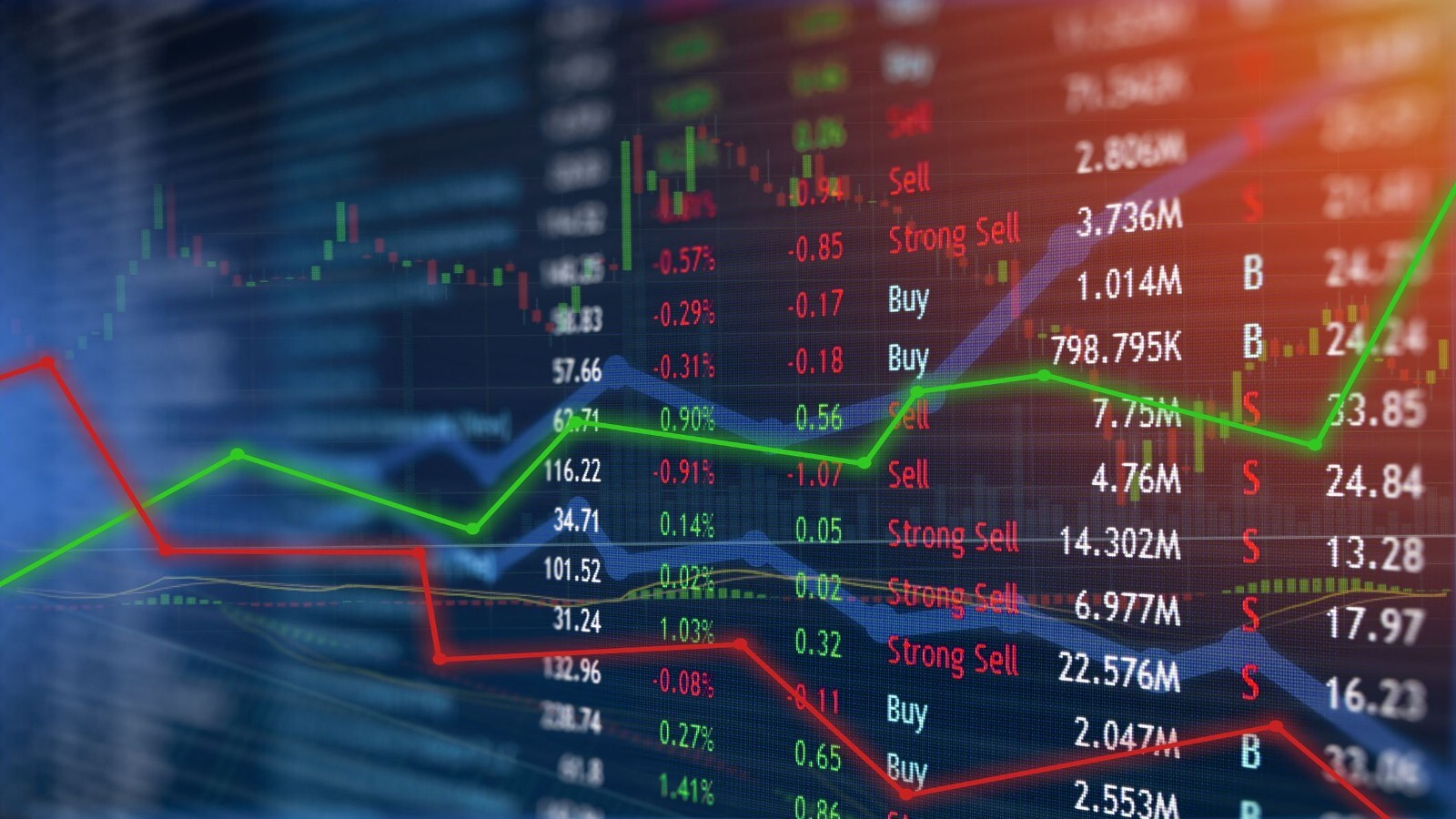Investing Lessons for Generation Y
Young investors can learn a lot from the market's recent volatility.

The recent market twisters may have you scrambling for shelter for your portfolio. According to online brokerage Betterment.com, during the market mayhem of early August, investors under age 35 were one-third more likely than older investors to move from stocks to bonds.
During the week of August 8, the first trading days following the downgrade of U.S. debt by rating agency Standard & Poor’s, the Dow Jones industrial average nauseated all onlookers -- diving as much as 635 points, or 5.6%, on Monday, only to climb by as much as 430 points, or 4.0%, the next day.
But none of this is reason to panic -- especially for young investors like us.
From just $107.88 $24.99 for Kiplinger Personal Finance
Become a smarter, better informed investor. Subscribe from just $107.88 $24.99, plus get up to 4 Special Issues

Sign up for Kiplinger’s Free Newsletters
Profit and prosper with the best of expert advice on investing, taxes, retirement, personal finance and more - straight to your e-mail.
Profit and prosper with the best of expert advice - straight to your e-mail.
Our youth not only affords us fewer wrinkles and faster metabolisms, it also allows us a higher risk tolerance for investments. “When you’re young, if there’s a major market setback, you still have time to hit your wealth targets,” says Dr. Walt Woerheide, PhD, CFP, ChFC, professor of investments at The American College, a non-profit school for financial services professionals.
Also, we’ll need stocks’ potential rate of return to try to beat inflation over the long term, says Kimberly Foss, a financial planner and founder of Empyrion Wealth Management, in Roseville, Cal. She likens the situation to trying to go up a down escalator: “If you just go on, you’ll go backward; if you walk up at a mild pace, you’re not going to make your goal,” she says. “You need [stocks’] rapid pace, which is higher than inflation, to make your goal.”
Here are answers to some questions you may have about the market mayhem -- and some sound lessons you can take away from the madness to get ahead in the long run:
What should I be doing with my portfolio now?
The short answer: not much. As shown by the aforementioned day-to-day Dow movements, knee-jerk reactions to current events are generally futile -- and often counterproductive for your portfolio. Young investors who traded stocks for bonds as the market dove lost out when it bounced right back. Your best bet is always to stick with your long-term investing plan.
That said, now would be an excellent time to pick up some cheap stocks. If you can afford to add to your investments, go for it. Jay Jones, 29, a frequent contributor to dialogue on Kiplinger’s Facebook page, decided to front-load his annual retirement fund contributions so he could afford to buy more cheap stocks now. You might also take a peek at your portfolio and consider rebalancing. You may need to beef up your stock allocation after recent losses. (See Knight Kiplinger’s Why I’m Still Buying Stocks.)
Are you seriously suggesting buying stocks right now?
Yes, but I understand your skepticism. With the recent slaughter of stocks, your portfolio may be bleeding red right now, and, given such fresh losses, you may not feel inclined to buy.
But as the mantra of the investing world goes, we should buy low and sell high. And disasters like the 635-point Dow dive on Monday, August 8, actually signal the perfect time to buy. “You’re talking about not just buying on sale,” says Foss. “You’re buying good goods at a deep discount -- like Neiman Marcus at 70% off sale.” (See YOUR MIND, YOUR MONEY: Learn to Control Your Fear and Profit from Crisis.) Foss walked her talk on that manic Monday: She helped her own 19-year-old daughter purchase stocks within her Roth IRA.
Dan Cole, a 31-year-old from Fairfax, Va., recognized the same opportunity: After the market plunge, he enthusiastically began investing. “I bought some shares of General Electric [GE], Johnson & Johnson [JNJ] and Paychex [PAYX],” he says. “All are solid companies that aren’t going away any time soon and that pay good dividends. I’m just enjoying the fact that they’re all underpriced right now.” (For other stock ideas, see OPENING SHOT: 12 Magnificent Stocks for Rocky Markets and STOCK WATCH: 6 Quality Stocks On Sale.)
If you had taken a similar contrarian stance, you would have posted a gain after about a week. From August 9 through August 17, Standard & Poor’s 500-stock index gained 6.7% and the Dow went up 600 points, or 5.6 %.
What should my asset allocation look like right now?
Foss recommends an aggressive portfolio for investors in their twenties -- 56% in U.S. stocks, 24% in international stocks (8% in emerging markets, specifically) and 20% in bonds. People in their thirties may want to start scaling back on stocks and bump bonds up to 30% of their portfolio. If you’re feeling even more aggressive, Woerheide backs a 100% stock play. For a pure stock portfolio, Foss suggests breaking it up into 70% U.S. stocks and 30% international stocks (with 10% in emerging markets).
Of course, Woerheide notes, such aggression ought to be reserved for your long-term investment plans with goals that are 20 to 50 years down the road -- such as retirement. For shorter-term goals, you should be more conservative with your strategy.
Profit and prosper with the best of Kiplinger's advice on investing, taxes, retirement, personal finance and much more. Delivered daily. Enter your email in the box and click Sign Me Up.

Rapacon joined Kiplinger in October 2007 as a reporter with Kiplinger's Personal Finance magazine and became an online editor for Kiplinger.com in June 2010. She previously served as editor of the "Starting Out" column, focusing on personal finance advice for people in their twenties and thirties.
Before joining Kiplinger, Rapacon worked as a senior research associate at b2b publishing house Judy Diamond Associates. She holds a B.A. degree in English from the George Washington University.
-
 Forget FIRE: Why ‘FILE’ Is the Smarter Move for Child-Free DINKs
Forget FIRE: Why ‘FILE’ Is the Smarter Move for Child-Free DINKsHow shifting from "Retiring Early" to "Living Early" allows child-free adults to enjoy their wealth while they’re still young enough to use it.
-
 7 Tax Blunders to Avoid in Your First Year of Retirement
7 Tax Blunders to Avoid in Your First Year of RetirementA business-as-usual approach to taxes in the first year of retirement can lead to silly trip-ups that erode your nest egg. Here are seven common goofs to avoid.
-
 How to Plan for Social Security in 2026's Changing Landscape
How to Plan for Social Security in 2026's Changing LandscapeNot understanding how the upcoming changes in 2026 might affect you could put your financial security in retirement at risk. This is what you need to know.
-
 Markets Are Quiet Ahead of Fed Day: Stock Market Today
Markets Are Quiet Ahead of Fed Day: Stock Market TodayInvestors, traders and speculators appear to be on hold amid an unusually fraught Fed meeting.
-
 DexCom, GE, SLB: Why Experts Rate These Stocks at Strong Buy
DexCom, GE, SLB: Why Experts Rate These Stocks at Strong BuyWall Street gives these three diverse names Strong Buy recommendations with high potential upside.
-
 The Best Aerospace and Defense ETFs to Buy
The Best Aerospace and Defense ETFs to BuyThe best aerospace and defense ETFs can help investors capitalize on higher defense spending or hedge against the potential of a large-scale conflict.
-
 AI vs the Stock Market: How Did Alphabet, Nike and Industrial Stocks Perform in June?
AI vs the Stock Market: How Did Alphabet, Nike and Industrial Stocks Perform in June?AI is a new tool to help investors analyze data, but can it beat the stock market? Here's how a chatbot's stock picks fared in June.
-
 Stock Market Today: Stocks Rise on Less Deadly Concerns
Stock Market Today: Stocks Rise on Less Deadly ConcernsMarkets are forward-looking mechanisms, and it's good when price action shows there's a future to look forward to.
-
 Stock Market Today: Stocks Soar on China Trade Talk Hopes
Stock Market Today: Stocks Soar on China Trade Talk HopesTreasury Secretary Bessent said current U.S.-China trade relations are unsustainable and signaled hopes for negotiations.
-
 Is GE Aerospace Stock Still a Buy After Earnings?
Is GE Aerospace Stock Still a Buy After Earnings?GE Aerospace stock is higher Thursday after the industrial firm topped analysts' fourth-quarter expectations and issued a strong full-year outlook. Here's what you need to know.
-
 Stock Market Today: Stocks Struggle for Direction as Earnings Roll In
Stock Market Today: Stocks Struggle for Direction as Earnings Roll InWhile General Motors stock soared after earnings, GE Aerospace and Verizon slumped.